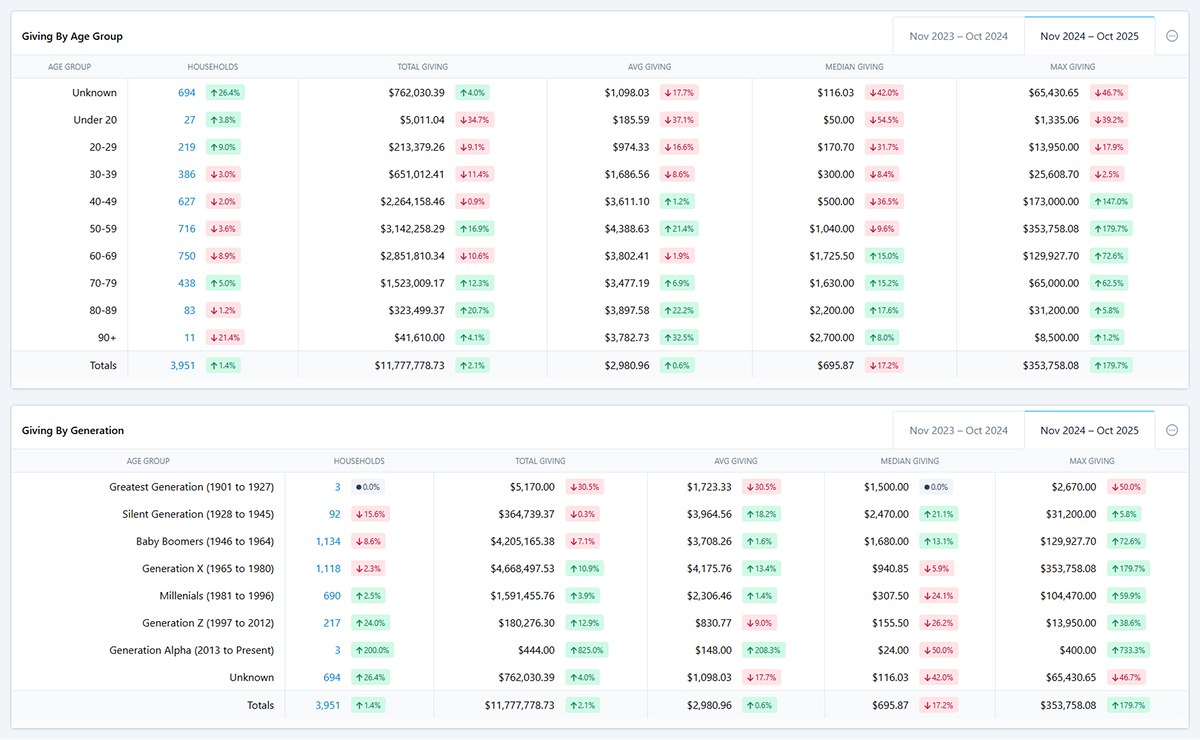In our 2024 Annual Generosity Report (comprising 537 churches), we identified 41 outliers who increased their giving by at least 5% for four consecutive years—29 of which experienced double-digit growth over the same period. I conducted interviews with 15 of the Lead Pastors to identify the best practices these churches have implemented to create a culture of consistent growth. Here’s what I learned.
First, the lead pastor is personally involved and assumes ownership of the stewardship and generosity ministry. They are convinced that it is imperative to personally practice generosity through their own giving. In addition, they are committed to provide financial transparency to the congregation through annual impact reports and are annually audited by an outside firm. Some include a skeleton of their annual operating budget. Interestingly, the majority of these pastors have the ability to see individual giving. That said, each of these pastors have a willingness to learn and grow. None of them said that their leadership role was easy or natural in the beginning, but determined that it was important enough for them to learn and make it a priority of their continuing personal growth.
Second, each church is intentional about discipling their givers in generosity. They view generosity as part of the spiritual formation process that connects to the heart of the giver. For them, giving is out of the overflow of a heart that in turn produces the behavior of giving that results in joy. These churches have established a clear theological framework for discipleship that goes beyond an annual sermon series. Steward is viewed as a noun, which creates identity. When used as a verb, steward emphasizes duty rather than devotion. Therefore, giving and generosity is viewed as the overflow of givers identity as a disciple. “Our desire is to create a culture of intentional discipleship,” one pastor remarked. “We make no assumptions about what people know about stewardship and generosity.” When pastors do approach the topic through their sermons, they preach courageously and unapologetically.
Third, they have the ability to cast a compelling vision that is qualified and quantified. They are able to connect the vision to specific needs that include specific, concrete numbers and the anticipated results that are expected as a result. The vision is supported by the celebration of impact through storytelling and testimonies across multiple media platforms. Clear and compelling vision allows these churches to disciple from a position of current and future success. One pastor commented, “Leadership has to assume responsibility. As the vision caster, lack of leadership becomes the lid of the vision.”
Next, outlier churches create a 12 month plan for stewardship and generosity. In addition to sermon planning, they have carefully scripted electronic communications, offering moments, special appeals such as missions or end of year giving, and financial classes ranging from household money management and debt retirement to legacy giving. This gives the opportunity for broad participation in the ministry on the staff level. Download End of Year examples and resources.
Fifth, each church segments their giver communication. Their communication strategy is performed along generational lines with the understanding that each generation thinks differently about giving and in many cases have different assets at their disposal. They utilize the Generations Table in MortarStone to identify Boomers, Gen X, Millennials and Gen Z in order to design specific messaging for each generation. Pastors in each church segment their top givers and routinely have one on one conversations with them in order to build relationships with what is arguably the most neglected demographic in the church.
Using MortarStone’s age and generational giving charts, you can easily assess giving across demographics and form strategies for discipling generosity.

Finally, the outliers offer creative giving options. They believe it is important to understand the psychology of their givers as well as their local economy. For example, if a church is located in a tech community such as Silicon Valley, they make sure to have a clear pathway for givers to contribute from cryptocurrency, utilizing plugins such as Engiven. Outliers work hard to normalize the conversation about gifts from non cash assets as a tax advantaged option, including publicly traded stock, real estate, gifts from IRA’s, and grants from Donor Advised Funds. Many are committed to providing simpler options for the younger generations to support the way they normally spend money, such as Apple Pay and Venmo.
The 41 outlier churches are churches like yours. They are different sizes, located in every time zone and in every region of the country. The practices they have implemented are not silver bullets. They are the culmination of time, patience and experience supported by the insights they gain through data analytics. Which is why they have established and maintained consistent growth in the past and will continue growing for the foreseeable future.
Upon reading this article, I encourage you to share it with your Executive Leadership team and schedule a time to discuss in detail the interview results from the outliers. I am available to discuss these findings with you and your team and share the insights from MortarStone data analytics that will help you lead with insight and not intuition. You can schedule a time to visit with me by email at tim.deatrick@mortarstone.com.
